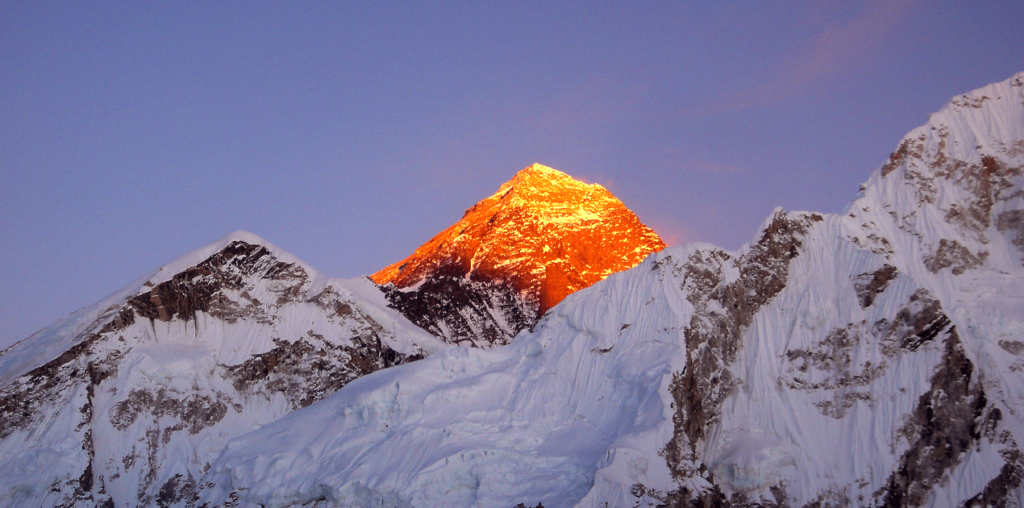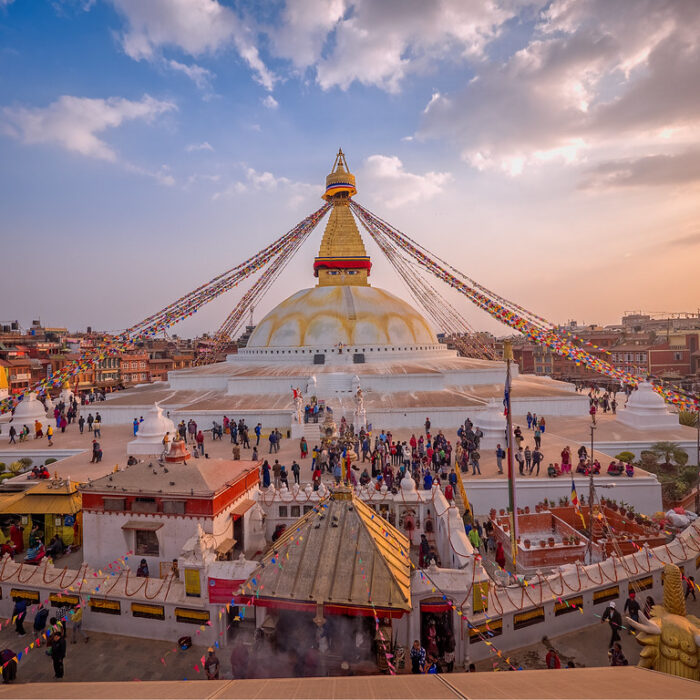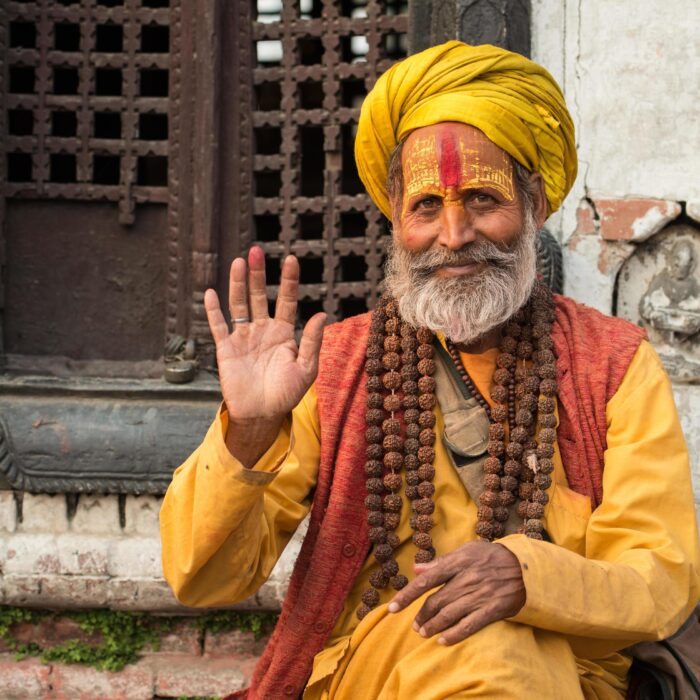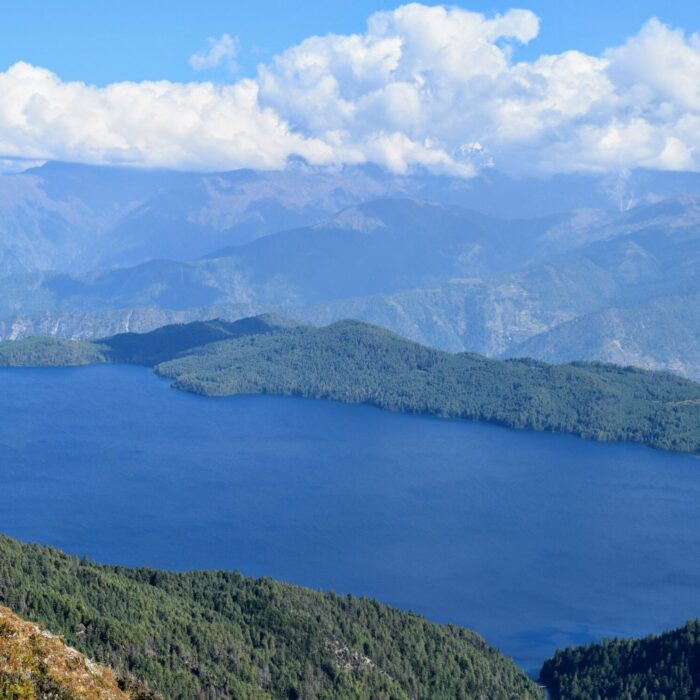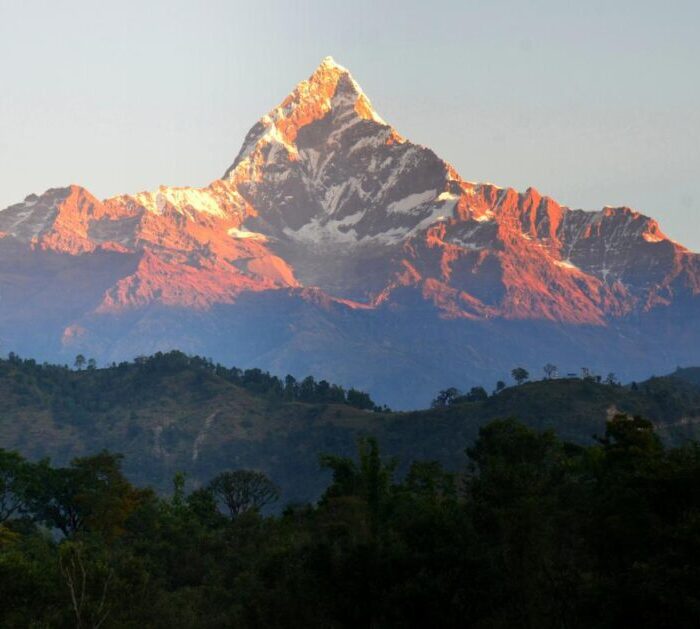Dive on a 12-day trek to Everest Base Camp, which is also known as the EBC Kalapathar trek. The Everest base camp trek starts with a quick flight to Lukla. This Everest base camp trek sets the stage for the best trek experience in Nepal. The trip to Phakding unfolds through lush forests, rolling hills, and iconic locations like Namche Bazaar, Tengboche, and Dingboche. Take a moment to adapt to Namche Bazaar before going to Gorak Shep and finally getting to the iconic Everest Base Camp. Also, marvel at the wide views of grand peaks, including Lhotse and Nuptse.
Finish the trek with a lovely sunrise at Kala Patthar, laying hold of the beauty of Everest in all its glory. Come to the climax of this Everest Base Camp 12 Day Trek with a scenic flight back to Kathmandu from Lukla. Thus, leaving you with lasting memories of this incredible Himalayan adventure.
Considering Your Everest Base Camp Trek Options
On the other hand, if you find the 12-day Everest Base Camp (EBC) trek plan hectic or wish to extend your trip further, we also offer a flexible 14-day trek at an additional cost. This extended plan will allow for a more relaxed pace. You can also explore local regions on adaptation days as extra trips.
Seeing Options on Acclimatization Day
Similarly, as part of the revised plan, you can opt for additional local region seeing trips on adaptation days. This 12-day Everest base camp trek provides a deeper cultural experience and also insights into the surrounding areas.
On the other hand, if you want alternative trek options, then you can consider the Round Annapurna Trek. We can provide details about this trek, including the travel route and its cost. Therefore, please feel free to inquire and also discuss your likings so that we can modify the trek according to your choice.
Customize Your Everest Region Trek
Similarly, if you’re looking for other trek options in the Everest region or want to modify your 12-day EBC trek, then please contact us. We can help you tailor the route to suit based on your liking, and also adjust its cost accordingly. On the other hand, if you are interested besides the 12-day Everest base camp trek, then please check other trek options which are listed down below:
Important Info
Please check our trek equipment list. This list will certainly be a guide for you if you plan to trek in Nepal. Similarly, you can check our AMC (Acute Mountain Sickness). This is the most important thing to consider while going on a trek or climb in Nepal. The AMC (Acute Mountain Sickness) can be a good guide for you to learn more about getting ill at high heights in Nepal. Also, if you want to do a Peak climb in Nepal then please check the climbing equipment list that is a must while going on the Peak climb. Likewise, we suggest you check the updated TIMS card rule as there have been some new changes in Nepal.
What’s Included in Your Everest Base Camp Trek Cost?
To give you an analysis of the 12-day Everest Base Camp trek cost, it includes various components. The airfare covers both ways from Kathmandu or Ramechap to Lukla, along with necessary transportation. Permits such as Everest National Park permits, Khumbu Pasang Lhamu Rural Municipality permits, and TIMS permits are also built-in.
Accommodation and Meals
Shared lodging at local inns, possibly in dorm rooms, is part of the 12-day Everest base camp trek package. The Everest base camp trek cost covers breakfast at these lodges throughout the trek. You’ll have the assistance of a skilled trek guide and one porter for every two people who go on this 12-day Everest base camp trek. For solo travelers, an expert porter guide is provided to carry 12 Kg of luggage during the 12-day Everest base camp trek.
Trekking Map and Flexible Booking Options
We provide an Everest Base Camp (EBC) trek map to assist you during the 12-day trek. Please note that prices may vary based on the chosen parts for your Everest base camp trek. Flexible booking options allow you to either arrange your hotel stay in Kathmandu or let us handle it for a small additional cost. We recommend a 2-night stay in Kathmandu before and after the 12-day Everest base camp trek. Lunch and dinner are not built in, thus, providing you the flexibility to choose your meals and pay for them during the EBC trek.
Booking is Open for 2024 / 2025
Are you planning to do a trek or a tour in 2024? If so, then in our Best Deals part, you can find the ideal information on the best price for the trek cost. Furthermore, book plans as soon as possible.
Contact us or Send a message or call us at
WhatsApp / Viber / Mobile: + 977 – 9851 022814, + 977 – 9841 451681
We are available 24/7
For further info, Contact us.
Itinerary
Day 1: Fly Kathmandu or Ramechaap/Lukla (2860m) & Trek Phakding (Tak Tok) (2610m) – 3.5 hrs. Walk
Morning, if the flight operates from Kathmandu, then we will transfer you to Kathmandu airport. If the flight operates from Ramechaap then we will pick you up at 01:30 AM and drive 5 hrs. To reach Ramechaap airport on a sharing basis to board a flight to Lukla. This flight itself is known for its fantastic aerial view of Mountain ranges. Upon arrival at Lukla, your guide will introduce you to other trekking members. Start your trek to Tak Tok at Phakding. You will walk for 3.5 hours today for a better acclimatization process.
Overnight at Local Lodge
Day 2: Trek Namche Bazaar (3440m) – 6 hrs. Walk
Enjoy your breakfast at the lodge and start the trekking trail that follows the Dudh Koshi River. You will cross the famous Double Suspension Bridge and an uphill climb with rewarding Mountain views will lead to Namche Bazaar which is the largest settlement of the Sherpa community in Nepal. Sherpa are the indigenous people of Nepal known for their climbing skills. On each expedition on the peaks above 8000 meters especially in the South Asian region you require the expertise and the help of Sherpa to make ascend successful. Free time on your own to stroll around the local town at your own pace.
Breakfast & Overnight at Local Lodge
Day 3: Acclimation Day or Excursion to Everest View Hotel & Khamjung to see Yeti Skull
The day is free for acclimatization. To ease this process we recommend you day excursion to Syangboche located at an altitude of 3780 meters to get the best panoramic views of Tawache, Everest, Nuptse, Lhotse, Ama Dablam, and Thamserku mountains. Also, visit the famous “Everest View Hotel” featured as the highest-placed hotel in the world. If interested you can also visit Khamjung monastery which houses the “Yeti Skull”. Return to Namche overnight.
Breakfast & Overnight at Local Lodge
Day 4: Trek Tengboche (3867m) – 5 hrs. Walk
Today’s trek will take you to Tengboche which is known for its excellent view of Ama Dablam Valley with the Everest skyline. Tengboche is also known for being the largest Buddhist monastery in the Everest region “Tengboche Monastery” which hosts the annual Mani Rimdu festival celebrated by Sherpa communities. You can witness evening rituals at the monastery.
Breakfast & Overnight at Local Lodge
Day 5: Trek Dingboche (4410m) – 5 hrs. Walk
Morning enjoy breakfast at your lodge. Your guide will fix a time for today’s walk and meet you at the exact time to start today’s trek. Today you will walk for 5 hours to reach to Dingboche located on the Glacier line of Imja and Duwo Glacier in Chukhung Valley. You will cross typical Sherpa settlements like Deboche, Pangboche & Shomare. Check-in at your lodge.
Breakfast & Overnight at Local Lodge
Day 6: Trek Lobuche (4940m) – 5 hrs. Walk
Start your trek today along Mani walls (especially Buddhist prayer stone carving) with an uphill climb to Dhugla. If interested can visit the Himalayan Rescue Association Health Post at Pheriche en route. Continue further to the moraine of the Khumbu Glacier bypassing Scott Fischer memorials and Babu Chairi Sherpa memorial. A gentle push for another 2 hours will lead us to Lobuche.
Breakfast & Overnight at Local Lodge
Day 7: Trek Gorekshep (5170m) with a visit to Everest Base Camp (5364m) – 7 hrs. Walk
Today’s walk is strenuous due to low oxygen level hence you are recommended to start early to avoid any rush. You will follow your guide’s instructions and follow him carefully on the trekking trails via Gorekshep Tso which is full of rocky dunes, Glacier moraine, and Glacier streams.
You will reach Everest Base Camp where you will see many expedition groups accommodating themselves in bright-colored tents willing to push themselves for a successful Everest Summit ascent. Since you will be at Base Camp of Everest hence it will not be visible but you can see the magnificent views of Nuptse, Khumbuste, and Pumori from this place. After spending some time here, you will trek back to Gorekshep village for an overnight stay. Gorekshep is the last temporary human settlement in the Everest Area.
Breakfast & Overnight at Local Lodge
Day 8: Kalapathar Sunrise Excursion and trek to Pheriche (4288m) – 8 hrs. Walk
Early morning you will climb to the best viewpoint on earth to see magnificent views of sunrise over Mt. Everest, Nuptse, Cho-oye, and Lhotse. When sun light strikes to white lofty peaks the entire color changes from white to orange. You can also see the view of Everest Base Camp from Kalapathar. Spend your time to cherish the accomplishment and return to Gorekshep for breakfast. After some rest, you will start your trek down to Pheriche following the same route.
Breakfast & Overnight at Local Lodge
Day 9: Trek Namche Bazaar (3440m) – 6 hrs. Walk
Today you will walk down to Namche Bazaar which takes 6 hour walk. You will check in at the lodge. Spend your free time exploring the local market. Namche is the biggest local market in the Everest region. Every Saturday you will see a weekly market for the best bargain prices, and local faces from neighboring villages. You can take advantage of the same to purchase mountain souvenirs, Yak cheese, or other handcraft.
Breakfast & Overnight at Local Lodge
Day 10: Trek Tak Tok – 4 hrs. Walk
To ease the recovery process after reaching the high altitude, we will walk down to Tak Tok and rest at the lodge.
Breakfast & Overnight at Local Lodge
Day 11: Trek to Lukla (2860m) – 4 hrs. Walk
Follow the downhill trail to reach Lukla. The rest of the day is free to relax your muscles or you can utilize this time to stroll around the market area for last-minute shopping.
Breakfast & Overnight at Local Lodge
Day 12: Fly Lukla/Ramechaap or Kathmandu
Your guide will escort you to Lukla airport to board a flight back to Ramechaap or Kathmandu. You will see off your porters and other trekking crew at Lukla. Upon arrival in Ramechaap, drive to Kathmandu in a shared vehicle and you will get transferred to your hotel. In Kathmandu hotel on own arrangements.
END OF THE SERVICES!
Include / Exclude
Cost Includes
- Lukla Round-trip airfare as applicable from Kathmandu or Ramechaap
- Domestic Airport taxes as applicable & necessary transfers as required on a sharing basis</li>
- 12 Days Everest Base Camp trek using Local Lodges (On higher elevations above Tengboche there is a possibility to stay in dormitory due to the limited availability of lodges)
- Room/Accommodation with Breakfast at Local Lodges during 12 Days Everest Base Camp trek
- For one person: English-speaking porter Cum Guide. For two & above pax: one experienced trek guide & one porter on every 2 persons
- Trekking crew allowances, Insurance, Food, and accommodation
- Trekking Map
- Everest National Park fee as applicable
- Trekkers’ Information Management System fee (TIMS) as applicable
- Khumbu Pasang Lamu Rural Municipality charge
- Government taxes as applicable
Cost excludes:
- Service excludes trekking equipment which can be rented in Kathmandu at extra cost, Hot water (Boiled drinking water)/Hot Shower & Battery Charges during the trek, arrangements in Kathmandu, Lunch & Dinner at Local Lodges during trek, and any other services due to flight delay or cancellation.
Map
![]() s=”alignnone size-full wp-image-3976″ src=”https://nepaltourspackages.com/wp-content/uploads/2024/02/everest-base-camp-trek-map.jpg” alt=”” width=”600″ height=”600″ />
s=”alignnone size-full wp-image-3976″ src=”https://nepaltourspackages.com/wp-content/uploads/2024/02/everest-base-camp-trek-map.jpg” alt=”” width=”600″ height=”600″ />
Frequently Asked Questions (FAQ)
Q1. How hard is it to climb Everest Base Camp?
Discover the moderate challenge of Everest Base Camp! This iconic trek typically spans two weeks if you are physically fit then 12 days also fine. While prior trekking experience isn’t necessary, determination and good physical fitness are recommended for an enjoyable journey. Make sure you discuss enough with your expert trekking guide from Alliance Treks and do enough question-and-answer interaction before you depart for this trekking.
Q2. Why do hikers spend 2 weeks at Everest Base Camp?
Nestled at 17,600 feet, Everest Base Camp lies far below the peak at 29,201 feet. Here, climbers spend weeks acclimatizing and preparing for their summit journey. It marks the farthest point attainable solely on foot before using additional equipment like ropes and ice picks.
In the meantime, spending two weeks on the Everest Base Camp trekking which will give you 2 days of acclimatization days along the way will help you physically maintain enough rest, in case of any natural climatize then rest along the way as well as slow pace walking will help you to reach your destiny.
Q3. What is the hardest day of the Everest Base Camp Trek?
Without a doubt, the toughest day will be the trek from Dingboche to Lobuche. It is brutal! Initially, the path seems easy with a short incline from Dingboche to Everest Base Camp. However, as you approach Dukla, the trail dramatically ascends, presenting a challenging climb.
You also may feel quite hard on the day you go from Lobuche to EBC and trek back to Gorakhshep but always remember you have a professional trekking guide and porters/supporters with you from Alliance Treks.
Q4. Can helicopters fly over Everest?
Helicopters with turbine engines can reach heights of around 25,000 feet. Despite successfully landing on the summit of Everest, the first helicopter to achieve this feat encountered some challenges due to the extreme altitude. Nevertheless, its takeoff stands as an extraordinary achievement, recognized as the highest and most remarkable ever accomplished.
Q5. How busy is Everest Base Camp?
Due to its rising popularity, the Everest Base Camp trek route can become crowded during peak seasons. Remarkably, around 30,000 to 40,000 people embark on this journey each year! On busy days, up to 500-700 individuals can begin the trek route daily. Yes, it is quite crowded in the season but the good news is a lot of lodges and Tea shops have been built along the way so lodges to spend a night and food during the trekking will be no problem. The most important thing is while you have professional guide/s, they will manage along the way without your effort.
Q6. Can you do Everest Base Camp without training?
Trekking to Everest Base Camp (EBC) is a bucket list adventure for many travelers, and it’s not limited to twenty or thirty-year-olds. It’s entirely possible to trek to EBC with kids, as we proved in October 2014. Tyler and Kara were just 10 and 11 years old when we accomplished this incredible journey. For your kind information in 2011, 6 6-year-old Australian boy did an EBC trek with Alliance Treks.
Q7. How many people fail Everest Base Camp?
On the Everest Base Camp Trek, the estimated number of deaths each year ranges from 3 to 5 on the low end, and it could reach as high as 12 to 15 on the high end. Considering that approximately 30,000 people undertake the trek yearly, this translates to a death rate of about 0.03%. Please note that these figures are estimates and can vary from year to year. Safety precautions and preparation are crucial when embarking on such challenging expeditions.
Q8. Do you need oxygen at base camp Everest?
At the current location, the altitude is 4900 meters, and the oxygen levels are at 52%. The ultimate goal, Everest Base Camp, stands at 5364 meters with only 50% oxygen. Trust us, you’ll experience heavy breathing at Base Camp due to the high altitude and reduced oxygen levels. Proper acclimatization and caution are essential to cope with the challenging conditions. Normally no one takes oxygen at the Everest Base Camp however if anyone has Asthma or has a breathing problem then recommended to take any kind of portable oxygen for 1 or 2 days or simply manage at the Lobuche or in Gorakhshep yourself for emergency with your trek guide otherwise “No Need”.
Q9. Where do you sleep on Everest Base Camp Trek?
During the trek to Everest Base Camp, the accommodations remain consistent throughout the route. Trekkers stay in lodges or teahouses along the trail. These lodges are typically multi-story houses with dozens of rooms, though sometimes they might have only one floor. In most cases, these lodges are owned by Sherpa families, serving as their own homes around 99% of the time (if not 100%). This arrangement allows trekkers to experience the local hospitality and culture while providing a comfortable place to rest during their journey.
Q10. What kills most climbers on Everest?
You are right. The main reasons for fatalities while climbing Mount Everest include injuries, exhaustion, and altitude-related illnesses. Among the altitude-related illnesses, high altitude cerebral edema (HACE) and high altitude pulmonary edema (HAPE) are significant contributors to deaths on the mountain.
HACE occurs when there is a buildup of fluid in the brain due to the brain’s swelling at high altitudes, leading to severe neurological symptoms. HAPE, on the other hand, involves the accumulation of fluid in the lungs, making breathing extremely difficult. Both HACE and HAPE are life-threatening conditions that can quickly become fatal if not treated promptly and appropriately.
Climbing Everest is an incredibly challenging endeavor, and climbers face various risks due to the harsh environment and extreme altitude. Proper acclimatization, physical fitness, and well-planned expeditions with experienced guides are essential for mitigating the risks and ensuring safety during the ascent.

